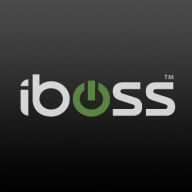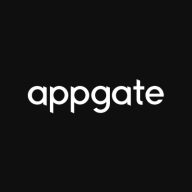


Appgate SDP and JumpCloud are prominent in security and identity management. JumpCloud seems advantageous due to its feature set and integration capabilities.
Features: Appgate SDP excels with a zero-trust architecture, dynamic network segmentation, and strong access controls, making it suitable for high-security needs. JumpCloud provides comprehensive directory services, device management, and cross-platform support, offering versatility for IT environments.
Room for Improvement: Appgate SDP might enhance user-friendliness and streamline initial configurations. Further integration with third-party applications and platforms could be areas of development. JumpCloud could improve on providing more advanced security features and expanding its ecosystem support. Additionally, addressing specific enterprise-level scalability needs may benefit JumpCloud.
Ease of Deployment and Customer Service: JumpCloud's deployment is straightforward, cloud-based, and beneficial for smaller businesses due to its easy setup and high integration capacity. Appgate SDP requires substantial network configuration skills but offers strong support for complex environments, which might pose a challenge for organizations without dedicated network teams.
Pricing and ROI: Appgate SDP has higher upfront costs but can deliver significant ROI via risk mitigation for organizations prioritizing security. JumpCloud features flexible pricing and lower initial investment, making it attractive for those seeking scalable identity management solutions. While JumpCloud is cost-effective initially, Appgate's security investment may prove profitable in the long term for those focusing on comprehensive security.



iboss offers a comprehensive security platform designed for diverse use cases such as web filtering, data loss protection, corporate proxy services, and URL filtering.
iboss integrates advanced features to address dynamic security needs, leveraging its strength in SASE, ZTNA, AI initiatives, and cloud integration, while ensuring seamless operations for remote work. It excels in historical forensics, malware protection, and flexible cloud deployments. Users benefit from comprehensive traffic scanning, robust malware detection, and PaaS capabilities that reduce hardware management. An intuitive admin console ensures efficient management with content filtering and low false positives. SSL decryption enhances security, while DLP protects data in AI conversations. Deployment is rapid and scalable, allowing effortless integration with emerging technologies.
What features does iboss offer?
What benefits and ROI should users consider?
iboss finds significant application in sectors such as education, where web filtering for K-12 is crucial, and in corporate environments requiring robust proxy services and URL filtering for network security. Its adaptability is essential in scenarios demanding flexible, decentralized security frameworks, particularly for remote work setups.
Appgate SDP is a network access control tool for local and remote access, multifactor authentication, and micro-segmentation. It is a flexible, robust, and configurable tool with good documentation, interface improvements, and ease of deployment.
It helps organizations prevent lateral movement across networks and servers and provides a more granular access control structure than traditional VPNs. Appgate SDP's valuable features include the ability to hide servers, good support, stability, scalability, and stopping lateral movement. It is currently being used as the main VPN solution for many companies.
JumpCloud enables organizations to manage devices, users, and applications across platforms like Windows, Mac, Linux, iOS, and Android. It offers centralized authentication, identity and access management, single sign-on, directory services, security policy enforcement, and cloud service integration.
Organizations leverage JumpCloud for its robust device management, policy management, and seamless integration with applications such as Microsoft 365 and Google Workspace. Its flexibility, stability, scalability, and ease of use make it a strong choice for managing business directories, executing scripts on-demand, synchronizing system access, and implementing mobile device management. Key features include remote access, Windows Out of Box Experience, strong authentication and authorization controls, centralized user and device management, efficient onboarding and offboarding processes, and extensive security and reporting features.
What are the most important features?In specific industries, JumpCloud is utilized to manage a wide array of tasks such as automating administrative functions in healthcare, ensuring secure access to sensitive data in finance, and supporting remote work needs in technology sectors. Its ability to integrate with diverse platforms and provide centralized control makes it suitable for managing complex IT environments.
We monitor all ZTNA as a Service reviews to prevent fraudulent reviews and keep review quality high. We do not post reviews by company employees or direct competitors. We validate each review for authenticity via cross-reference with LinkedIn, and personal follow-up with the reviewer when necessary.